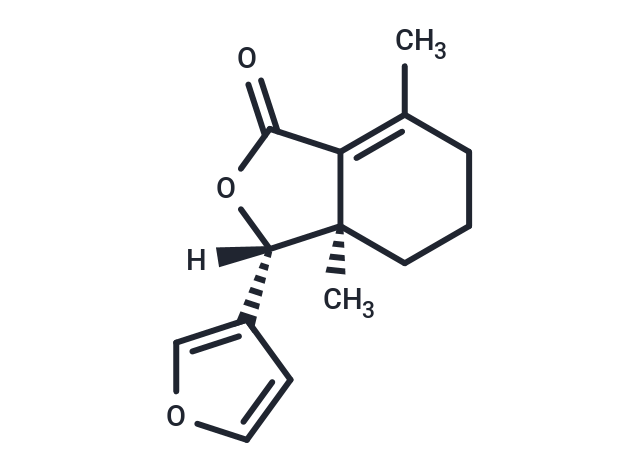Shopping Cart
- Remove All
 Your shopping cart is currently empty
Your shopping cart is currently empty

1. Fraxinellone significantly reduced weight loss and diarrhea in mice and alleviated the macroscopic and microscopic signs of the disease. 2. Fraxinellone exhibited a variety of insecticidal activities including feeding-deterrent activity, inhibition of growth, and larvicidal activity. 3. Fraxinellone has effect in the midgut metabolism of Mythimna separata (M. separata), via protease (especially the weak alkaline trypsin-like enzyme), carboxylesterase and glutathione S-transferase.

| Pack Size | Price | Availability | Quantity |
|---|---|---|---|
| 5 mg | $66 | In Stock | |
| 10 mg | $97 | In Stock | |
| 25 mg | $189 | In Stock | |
| 50 mg | $282 | In Stock | |
| 100 mg | $424 | In Stock | |
| 1 mL x 10 mM (in DMSO) | $78 | In Stock |
| Description | 1. Fraxinellone significantly reduced weight loss and diarrhea in mice and alleviated the macroscopic and microscopic signs of the disease. 2. Fraxinellone exhibited a variety of insecticidal activities including feeding-deterrent activity, inhibition of growth, and larvicidal activity. 3. Fraxinellone has effect in the midgut metabolism of Mythimna separata (M. separata), via protease (especially the weak alkaline trypsin-like enzyme), carboxylesterase and glutathione S-transferase. |
| Molecular Weight | 232.27 |
| Formula | C14H16O3 |
| Cas No. | 28808-62-0 |
| Smiles | [H][C@]1(OC(=O)C2=C(C)CCC[C@@]12C)c1ccoc1 |
| Relative Density. | 1.1649 g/cm3 (Estimated) |
| Storage | Powder: -20°C for 3 years | In solvent: -80°C for 1 year | Shipping with blue ice. | |||||||||||||||||||||||||||||||||||
| Solubility Information | DMSO: 42 mg/mL (180.8 mM) Chloroform, Dichloromethane, Ethyl Acetate, Acetone, etc.: Soluble | |||||||||||||||||||||||||||||||||||
Solution Preparation Table | ||||||||||||||||||||||||||||||||||||
DMSO
| ||||||||||||||||||||||||||||||||||||

Copyright © 2015-2024 TargetMol Chemicals Inc. All Rights Reserved.